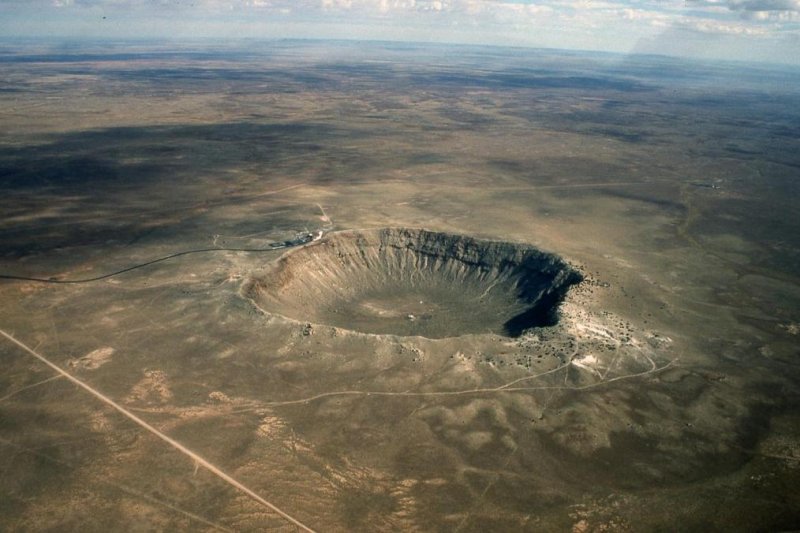Barrage of city-sized asteroids peppered Earth between 2.5B, 3.5B years ago
By
Brooks Hays

This crater in Arizona was produced by the impact of a 165-foot-wide meteor, the type of impact that new research suggests regularly happened between 2.5 and 3.5 billion years ago. Photo by Dale Nations/AZGS
July 8 (UPI) -- Early Earth was bombarded by massive asteroids more frequently than scientists previously thought.
According to new research, scheduled for presentation Friday at the Goldschmidt Geochemistry Conference, Earth was struck by a city-sized asteroid an average of once very 15 million years between 3.5 and 2.5 billion years ago -- a rate 10 times higher than earlier estimates
Though the asteroids ranged in size, most would have been comparable to the Chicxulub impact that wiped out the dinosaurs some 66 million years ago.
Just a few billion years ago, the inner solar system was a violent place.
The scars of this tumultuous period can be see on the surfaces of the moon, Mars and other rocky planets, but over time, plate tectonics and intense weathering, driven by Earth's dynamic, moisture-rich atmosphere, have helped mask the signatures of ancient collisions.
Authors of the latest study suggest an accurate reconstruction of the history of asteroid impacts on early Earth is essential for understanding the planet's near-surface chemistry, as well as early Earth's ability to host life.
Fortunately, locating crater contours isn't the only way to identify prehistoric asteroid impacts.
RELATED European Space Agency adds another new Venus mission
Glass "spherules" formed from molten vapors expelled by massive asteroid collisions can be preserved in ancient rocks, revealing the presence of an impact a few hundred million years later.
By analyzing the distribution of spherules within ancient rock formations, researchers can gauge the size of a particular impact.
"We have developed a new impact flux model and compared with a statistical analysis of ancient spherule layer data," study author Simone Marchi said in a press release.
RELATED Melting ice sheets triggered 60 feet of sea level rise 14,600 years ago
"With this approach, we found that current models of Earth's early bombardment severely underestimate the number of known impacts, as recorded by spherule layers," said Marchi, a geoscientist at the Southwest Research Institute.
"The true impact flux could have been up to a factor of 10 times higher than previously thought in the period between 3.5 and 2.5 billion years ago," Marchi said. "This means that in that early period, we were probably being hit by a Chicxulub-sized impact on average every 15 million years."
Because there is so much uncertainty about the history of major cosmic collisions on Earth, many scientists ignore the phenomenon entirely.
But the authors of the latest research suggest these impacts were likely big enough to significantly alter the course of Earth's geochemical and atmospheric evolution, and thus, shouldn't be disregarded.
The latest research suggests frequent asteroid impacts would likely have had a strong influence on Earth's oxygen levels, the researchers said.
"We find that oxygen levels would have drastically fluctuated in the period of intense impacts," Marchi said. "Given the importance of oxygen to the Earth's development, and indeed to the development of life, its possible connection with collisions is intriguing and deserved further investigation. This is the next stage of our work."
No comments:
Post a Comment